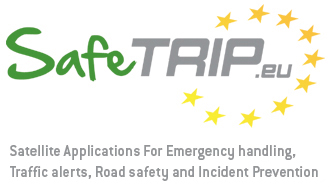

Introduction
User Needs
Environment
Passenger Transport Operators
Environment
Access to Vehicle Information
Access to Environmental Information
Description of Methodology
Others
Safety
Entertainment
Others
Individuals EU-Citizens
Safety
Navigation
Entertainment
Emergency Services
Call Filtering
Information about Heavy/Hazardous Goods
Information about Coach/Bus involved in Incident
SafetyMessage BoardOne of the key issues for international coaches transporting passengers from different nationalities, is communication between driver and passenger, as announcements are often not made in languages understood by each and every passenger. This can be important if information with safety and legal implications needs to be conveyed to and from the passenger and driver. For example, passengers are required by law to wear the safety belts and failure to do so will have them fined if there is a police check. 
The operators think that the use of a message board to provide multilingual text related to the safety requirements of local laws might be advantageous. In certain situations, such as at rest stops, some passengers are left behind by the coach midway during the journey. Often it is difficult for drivers to say who was left behind. This poses a safety issue for transport operators to resolve. Message boards could provide multilingual text communication, for example during rest stops along the journey and in the crucial and stressful situation of breakdowns which personal schedules and network connections are interrupted. Ineffective communication due to language difficulty can lead to passengers being left behind, even though drivers announce the break duration and departure timings. Handling Breakdowns and AccidentsWhen there is a breakdown or accident, coach drivers typically inform the Transport Operator using their mobile phones to request assistance from the emergency services and recovery teams. For the most part, professional coach drivers are able accurately to describe their position on the road network using landmarks and other metrics. However, if the coaches deviate from planned routes due to situations arising on the motorway, or if they are in an area with low or no terrestrial network coverage, it can take a long time before they can be located – if at all. Therefore the transport operators need a reliable way to track their fleet vehicles and retrieve pertinent information such as the state of the vehicle and occupants in case of breakdowns and emergencies. Emergency Call ServiceTransport Operators have a requirement for an emergency call service functionality that will allow the coaches to communicate with emergency services of the coach’s country of origin or through to their operation centres. It is seen to be an advantage to connect with the country of origin to overcome language barriers to connect to local emergency services instead of using the local mobile phone network to connect to local emergency services. An emergency call facility of this kind will be particularly valuable in cases of accidents, and circumstances that involve aggressive or unstable passengers affecting the operation of the coach. Passenger TrackingTransport Operators need to know number of passengers on coach in case of incident or to prepare for emergency response. The information is currently kept on the coach in paper format, but there would be a quicker, and possibly substantially more accurate, incident response if this were digitized and made available “in the cloud” so that the driver, passenger, operations centre, and control centre all had access to a live manifest of passengers on the coach. Currently, only European airlines are allowed to keep a digitized live manifest. Although anonymous data “in the cloud” would be sufficient for issues such as readjusting capacity on connecting services if coaches are running behind schedule, knowledge of the identity of the passenger is desirable for safety reasons. Identity, as it will allow operation centres to inform the next of kin or other individuals in case of serious accidents - and also help emergency services identify any fatalities. |
Figure 7: LED message boards in the native language of the passenger could take the place of drive announcements

